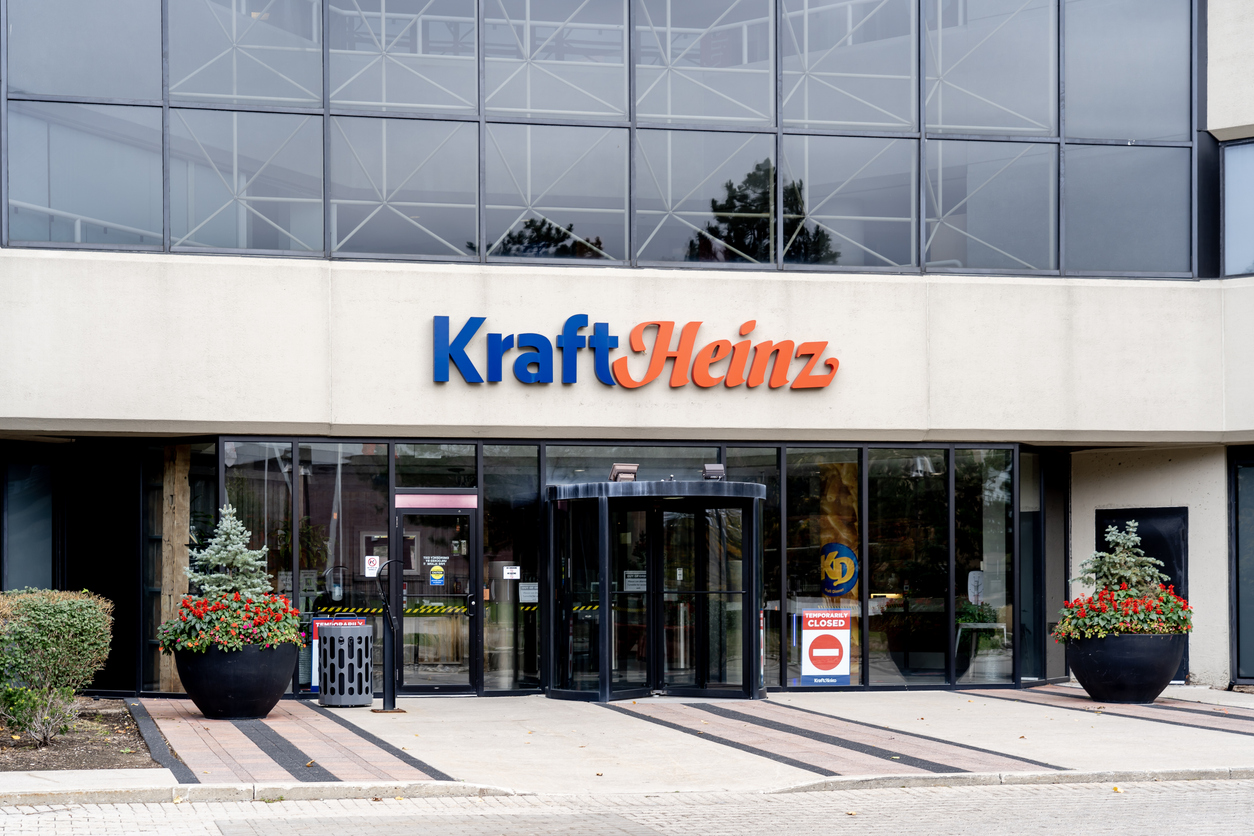Kraft Heinz Stock is a Value Investors' Favorite With its 5.4% Yield

The Kraft Heinz Company (KHC) stock looks cheap to value investors with its annual 5.40% dividend yield. That is well over its historical average, while the dividend payment has remained stable. This implies KHC stock is worth much more. Moreover, short-put yield plays are attractive.
KHC is at $29.59 in midday trading on Monday, April 14. That is well below a recent peak of $32.22 on March 10, but up from a recent low of $27.69 on April 8.

Moreover, KHC's dividend per share (DPS) of $1.60 has stayed level for the past 6 years. That means we can use its average dividend yield to value the stock, assuming it will revert to the mean over time.
Dividend Yield-Based Price Targets
For example, Morningstar reports that KHC stock has had an average 5-year average dividend yield of 4.47%. So, this means that KHC stock could be worth 21% more:
$1.60 DPS / 0.0447 = $35.79 price target
$35.79 / $29.59 = 1.2095-1 = +21% upside
In other words, if KHC were to trade at its average 5-year dividend yield, the stock would rise 21%.
Similarly, Yahoo! Finance reports that its calculations show the average 5-yield has been 4.51%. That implies a price target of $35.48 per share, or +19.5% higher.
Moreover, just to be conservative, let's use the past 2 years' average yield. According to Morningstar, KHC had an average yield of 4.33% in 2023 and 5.46% in 2024, an average of 4.895%:
$1.60 DPS / 0.04895 = $32.69 price target
That is +10.5% over today's price. In other words, assuming KHC reverts to the average yield of the last 2 years, KHC could rise 10% from today.
That is why, on a very simplified basis, KHC stock looks attractive to value investors. It seems unlikely that the company will cut its dividend. Even if a recession occurs, people will still eat Kraft Heinz food products.
Nevertheless, there is no guarantee that this will happen over the next year. For example, KHC stock could stay with a high yield of over 5% for some time.
As a result, one way to play this in the short term is to sell short out-of-the-money (OTM) put options. That way, an investor can get paid while waiting for the stock to rise, and also set a lower buy-in target price.
Shorting OTM Puts
For example, the May 16 expiry period, 32 days from now, shows that the $27.50 strike price put option has an attractive premium of 41 cents per put contract (midpoint). Note that this strike price is 7.0% below today's trading price.
That implies a short seller of these puts can make an immediate yield of 1.49% (i.e., $0.41/$27.50) over the next month.

The investor who secures $2,750 in cash or buying power with their brokerage firm can do this play. For example, after entering an order to “Sell to Open” 10 put contracts (using $27,500 as collateral), the investor's account would immediately receive $410.
That is 1.49% of the $27.5K invested in this play over the next month. It implies that over the next 3 months, assuming the investor can repeat this trade, the expected return (ER) is 4.47%:
$410 x 3 =$1,230 (3 mo ER)
$1,230 ER / $27,500 invested = 4.47%
In other words, in just three months, the investor stands to make as much income as the average annual yield. The four-month ER is 5.96% (i.e., $1,640/$27,500), or higher than its present 5.39% annual yield.
Again, this assumes that the short-put play yields for one month to expiration remain at 1.49%. There is no guarantee this will happen. However, there are downside risks.
Downside Risks
For example, if KHC falls to $27.50 or lower on or before May 16, the account could be assigned to buy 100 shares at $27.50 per share. That means the $2,750 collateral per shorted put contract would be used to buy 100 shares at $27.50.
This could result in an unrealized loss. However, the account will have already received the income, so the breakeven point is lower, i.e., $27.50 - $0.41, or $27.09 per share.
Moreover, the investor's dividend yield at this point is very high:
$1.60 DPS / $27.09 breakeven = 5.90%
That is significantly higher than the stock's average yield. As a result, there is a strong tether to help push KHC back up, so that it reaches a lower yield. In other words, the short-put play breakeven point provides a catalyst to help push KHC stock higher.
In addition, the investor could sell short covered calls at out-of-the-money (OTM) strike prices to help defray any potential unrealized loss (i.e., if KHC falls below the breakeven point).
Investors can study these risks with the Barchart Learn Center, including the Options Trading Risk tab.
The bottom line is that KHC looks cheap here, based on its average yield, and with short-put OTM plays.
On the date of publication, Mark R. Hake, CFA did not have (either directly or indirectly) positions in any of the securities mentioned in this article. All information and data in this article is solely for informational purposes. For more information please view the Barchart Disclosure Policy here.